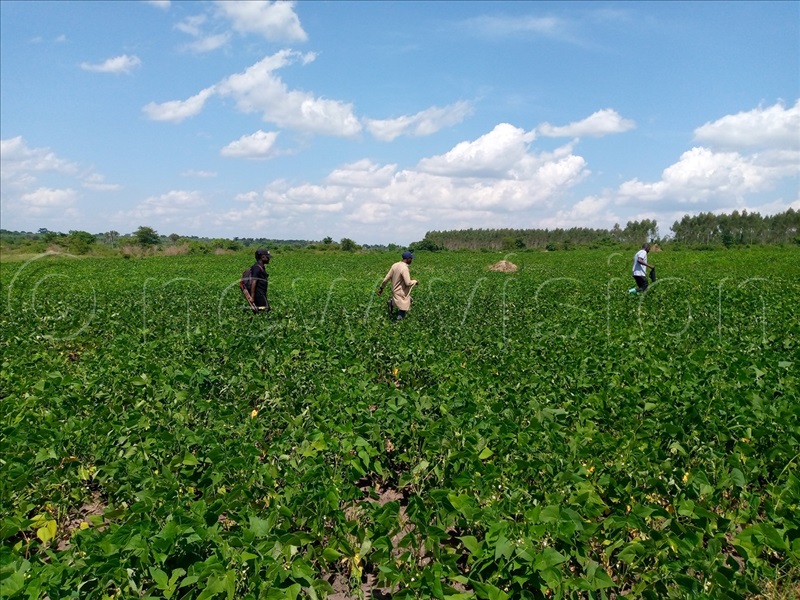Beans are grown across all the regions in Uganda. Good bean production starts with the right seeds, which must be certified for the best harvest. Below find a summary of managing the crop.
Beans are important providers of almost half of the protein intake and a quarter of the total calories for Ugandans.
Both high and low-altitude areas are suitable as long as there is adequate rain. They, however, tend to grow and mature faster in lower altitude zones.
Gideon Zakke, an agronomist says beans require medium to high rainfall areas with an average of 750- 2000mm annually.
“Too much rain and long spells of drought are not good for beans and reduce their yields,” he explains.

He says well-drained soil that is high in organic matter and with a pH of between 6 and 7 is suitable for beans, but growth is poor in waterlogged soils.
Daniel Katamba, a bean farmer says land preparation should be done early enough so that the field is free of weeds and ready for planting at the onset of the rains. The seedbed should contain fine soil.
Farmers are advised to buy certified seeds. Local farmers, however, prefer using seeds from their stock. This is acceptable (because beans are self-pollinated), but farmers should carefully select seeds for planting.
Ensure all wrinkled, damaged or diseased seeds are not planted.
Seeds when planted are prone to fungal diseases and pest damage before they germinate. To prevent this, all seeds must be treated with organic fungicides and pesticides, which are available in the market.
Inoculating beans before planting is important as it improves farmers’ yields.
Inoculation is the process of mixing bean seeds with nitrogen-fixing bacteria called rhizobium, which enables the bean plant to take in more nitrogen during the growth cycle.
Beans should be planted at the onset of the rains. A delay in planting may cause a reduction in yields or even crop failure.
Where beans are planted alone, Katamba says it should be done in rows at 50cm by 10 cm (one seed per hill) if weeding is done using animal-drawn implements or tractors, then spacing can be done according to the implement to be used for weeding.
For farmers who want to intercrop beans with maize, two rows of beans 15 cm apart can be planted between maize rows.
Katamba says plant one bean seed per hole when using this spacing pattern. The other alternative is to plant 1 bean row and then two seeds per hole.
The amount of seed required for a given area will vary from variety to variety and the size of the seed.
The bigger the size of a seed, the more the quantity of seed required. Beans grown as pure stands take up more seeds than when intercropped with maize.
According to Zakke, the use of farmyard manure or well-made compost is highly recommended for bean growing especially in areas where soils are low in organic matter content.
The manure should be applied at least one week before planting. Apply seven to 10 tonnes of farmyard manure for every acre of land.
Weeding should be done continuously to ensure all the weeds are controlled.
Farmers are advised to weed the crop 2-3 weeks after emergence followed by second weeding, 3 weeks later (before flowering) when beans are planted alone.
Avoid cultivation at the flowering time when the field is wet as this can spread diseases.
Harvesting should be done immediately after the pods turn brown and hard before they start shattering





